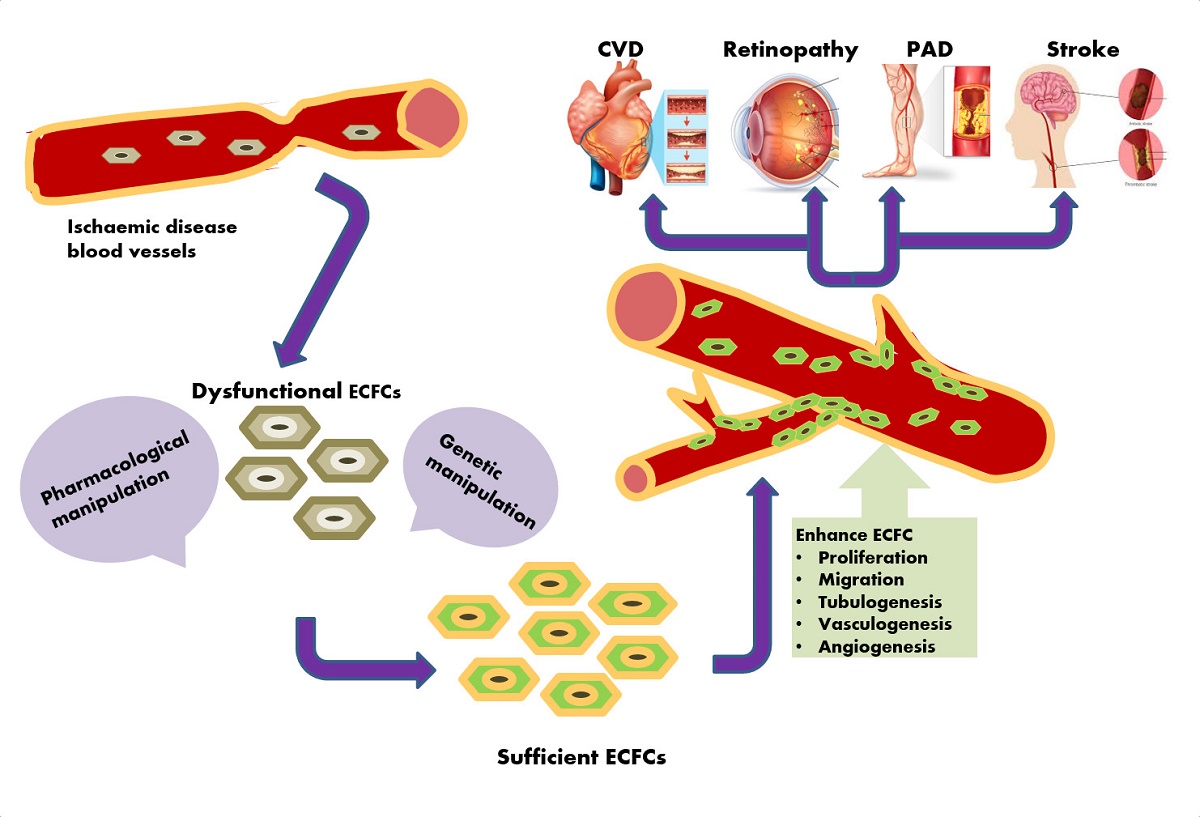Cardiovascular disease (CVD) comprises a group of heart and circulatory disorders, which are regarded as a global medical issue with high prevalence and mortality rates. Currently, vascular regenerative surgery represents the most employed therapeutic option to treat ischemic disorders, even though not all the patients are amenable to surgical revascularization. Therefore, more efficient therapeutic approaches are urgently required to promote neovascularization. Therapeutic angiogenesis represents an emerging strategy that aims at reconstructing the damaged vascular network by stimulating local angiogenesis and/or promoting de novo blood vessel formation according to a process known as vasculogenesis. Circulating endothelial colony forming cells (ECFCs), in turn, represent truly endothelial precursors able to aggregate into bidimensional tube networks and to originate patent vessels. Accordingly, ECFCs provide the most rationale and promising cellular candidate for therapeutic purposes. The current review provides a brief outline on the origin and characterization of ECFCs and a summary of the progress in preclinical studies aiming at assessing their efficacy in a variety of ischemic disorders, including AMI, PAD, ischemic brain disease and retinopathy. We also describe how to enhance the vasoreparative potential of ECFCs by boosting specific pro-angiogenic signalling pathways either pharmacologically or through gene manipulation. Taken together, these observations suggest that ECFCs represent a useful strategy to treat ischemic diseases.

